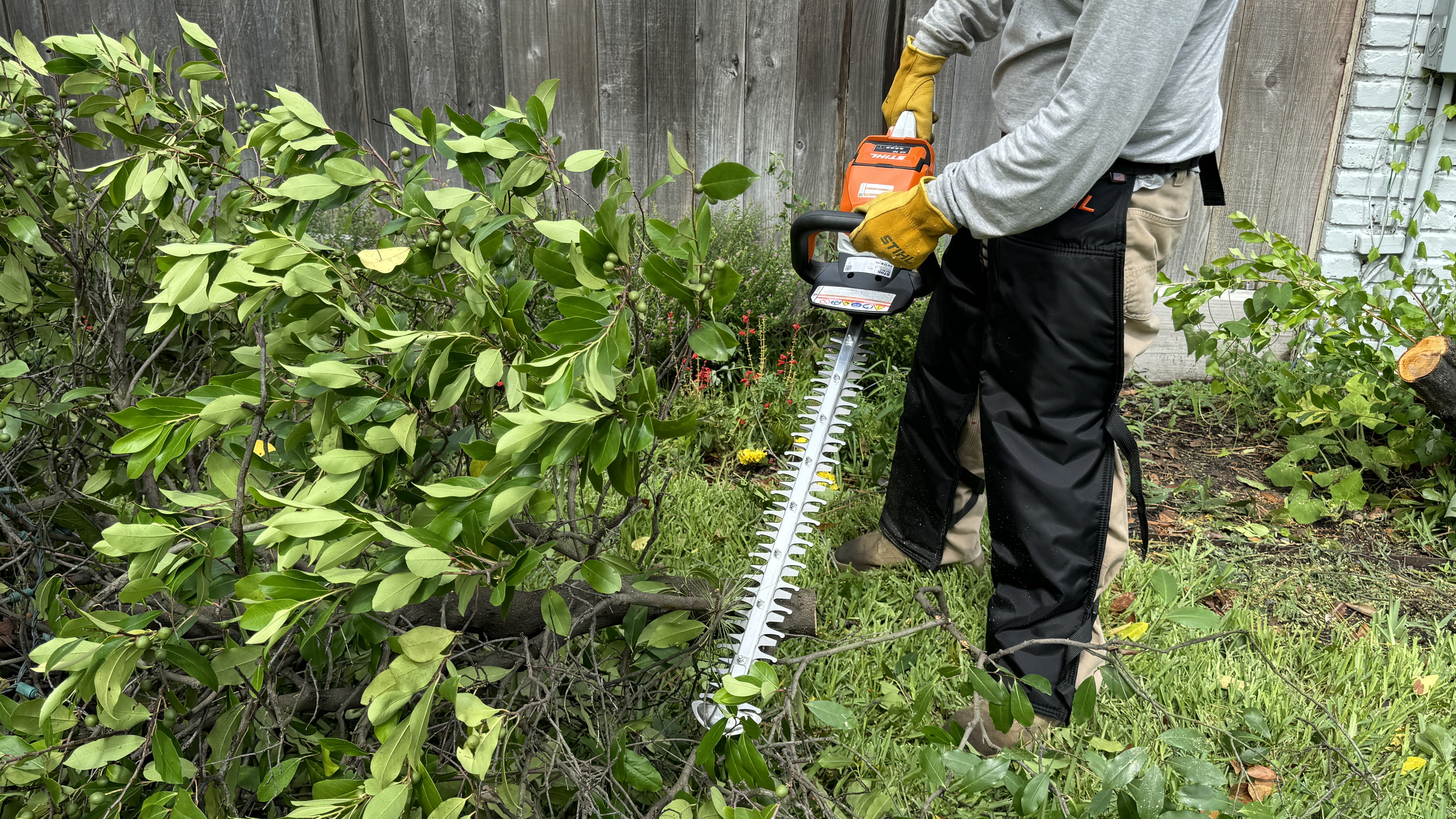
- Hedge trimmer (like the Husqvarna Hedge Master 320iHD60)
- Compatible batteries and charger (if cordless)
- Specialized ladder e.g. a tripod ladder (if trimming a high-hedge)
- Gardening gloves (like these leather work gloves for $9.99 on Amazon)
- Stiff-bristled brush
- Rake/leaf blower (optional)
Whether you’ve just got yourself one of the best hedge trimmers or you’re taking out your trusty old trimmer after months in storage, it’s worth recapping how to use this powerful yard tool before you go ahead and trim your hedge.
Trimming is important to the appearance and health of a hedge or bush. With a careful approach, you can use your hedge trimmer to sculpt an attractive shape. Plus, by removing outer growth, you’re effectively pruning the hedge plant, which will encourage healthy regrowth and a high density of branches and leaves.
To help you achieve a pro-standard trim, I spoke to two experts—a gardening professional and a renowned grower of hedging plants—who have kindly provided advice to accompany this step-by-step guide. You’ll find their top tips throughout this short guide.
Quick steps: How to use a hedge trimmer
- Prepare the hedge area
- Prepare your hedge trimmer
- Trim the hedge
- Reassess and trim untidy areas
- Tidy up the trimmings
- Clean your hedge trimmer
Step by step guide: How to use a hedge trimmer
1. Prepare the hedge area
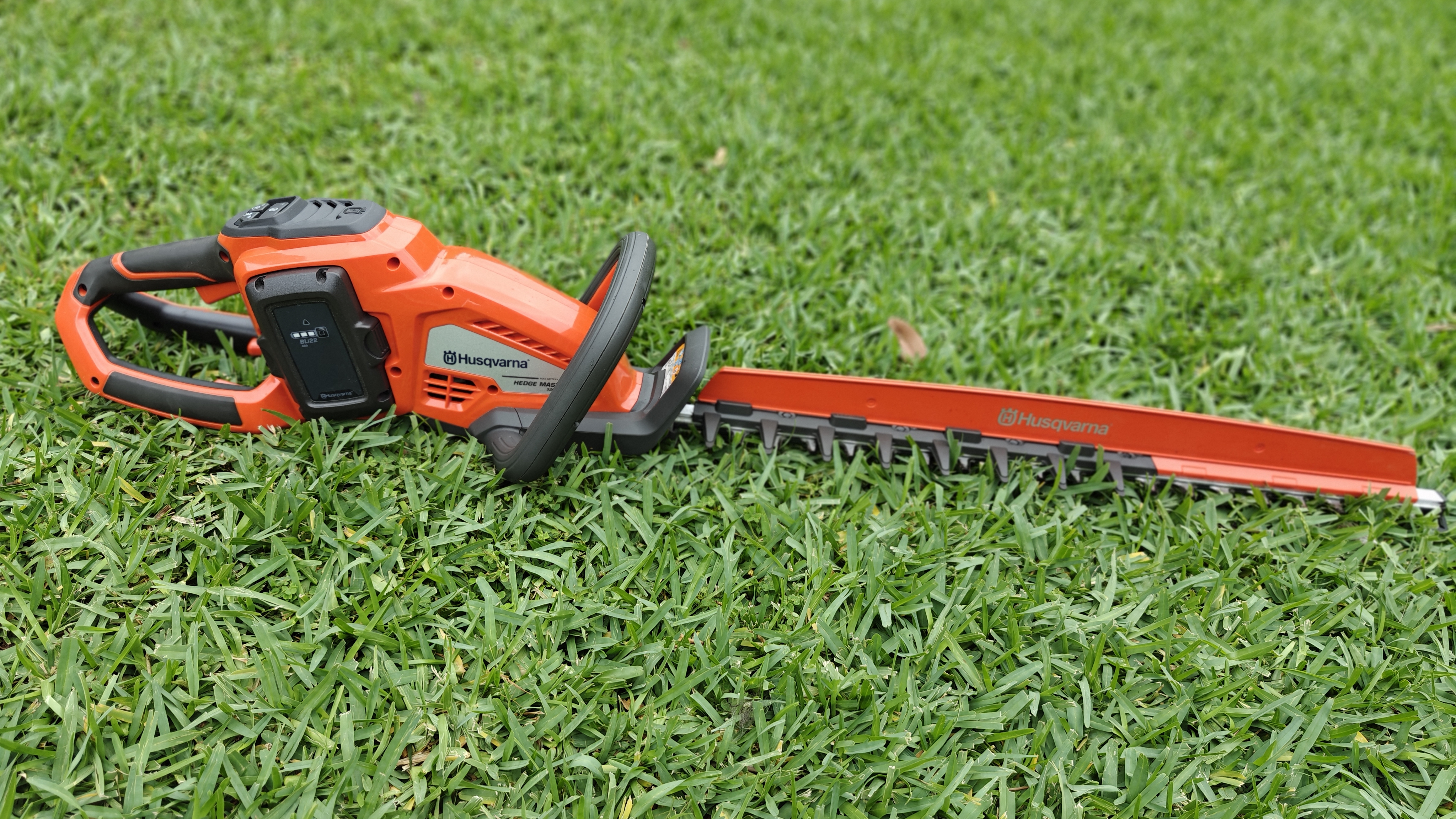
A hedge trimmer works very quickly once you’ve activated the blade. With this in mind, good preparation and planning are crucial.
First, decide which parts of the hedge you will cut, and how much material you’ll remove. Having a plan in mind is much better than making it up as you go along.
If your hedge is taller than you can reach from the ground with your trimmer, set up a ladder designed for uneven ground, or another safe solution to help you reach high-up parts of the hedge.
“Before you start trimming, check the area you want to trim to make sure nothing is in the hedge, especially bird nests which can be easily hidden,” says MyBuilder.com’s James Lewis.
You might also want to put tarps down on the ground, next to the sides of the hedge that you’re going to trim. This will make it much easier to dispose of the trimmings when you’re done.
2. Prepare your hedge trimmer
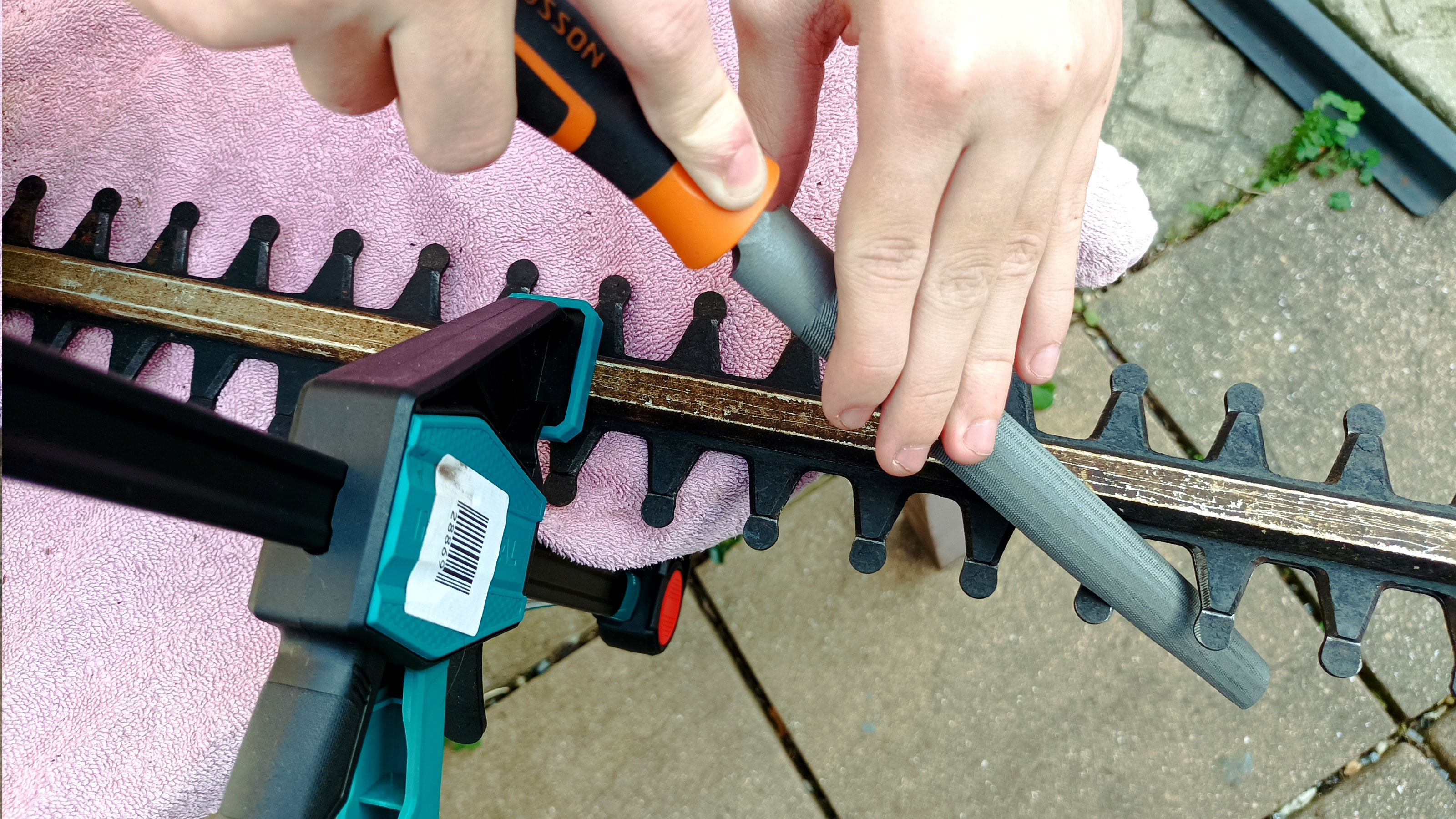
“Check your trimmer and make sure it is clean and the blades are sharp,” says James.
“Depending on the type of trimmer you have, ensure it has enough fuel in the tank, or if you’re using a corded electric model, make sure you have enough cord to reach the area you are trimming as you might need an extension lead.”
Meanwhile, if you have a cordless electric hedge trimmer, you’ll need to make sure the lithium-ion battery is sufficiently charged, before you start trimming.
It’s equally important to prepare yourself for safe trimming, as hedge trimmers can be dangerous.
“Trust me, put your safety gear on as trimming hedges can lead to injuries,” James advises.
“Wear protective goggles, gloves and closed-toe shoes—Crocs or flip-flops are unsuitable garden maintenance footwear, even during warmer weather.”
Finally, remove the guard from your hedge trimmer’s blade.
3. Trim the hedge
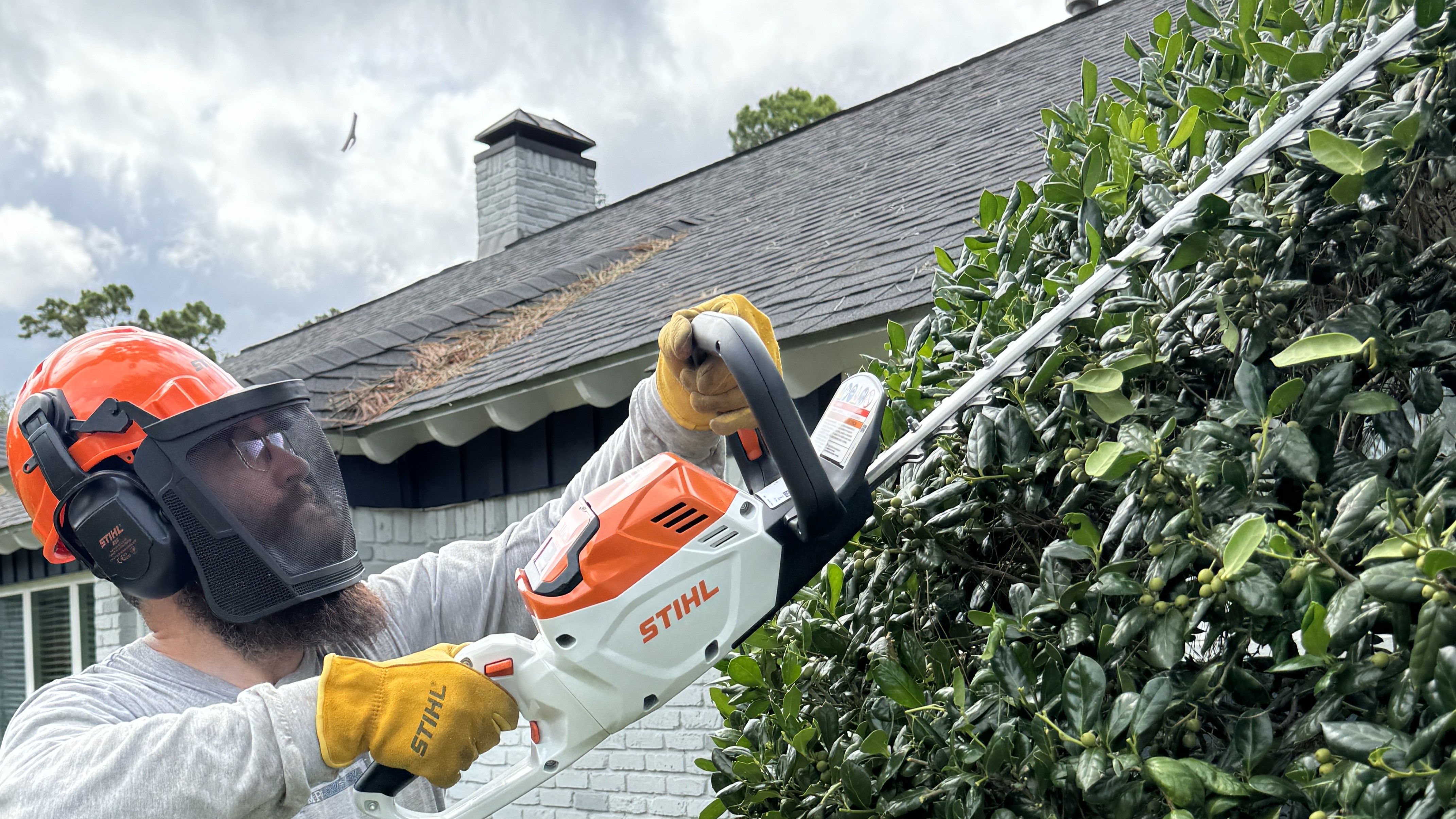
With all of your checks and preparations completed, it’s time to start trimming. This is an opportunity to have fun and be creative—but there are certain best practices to bear in mind while you work.
“When trimming, it’s best to start from the bottom and work your way up, as this helps avoid over-trimming, keeps the hedge in shape and gives you an even trim,” says Morris Hankinson of Hopes Grove Nurseries Ltd.
“Keep the blades parallel to the hedge surface, and move the trimmer in smooth, sweeping motions to avoid cutting too deeply in one area. Take smaller cuts if you're aiming for precision and then adjust the depth as needed.
“A useful rule of thumb is to trim the sides slightly tapered so that the base is wider than the top—this helps the hedge get better light exposure from top to bottom. Make use of features like telescopic handles to trim tall hedges or hard-to-reach areas without overextending yourself,” he adds.
4. Step back and tweak
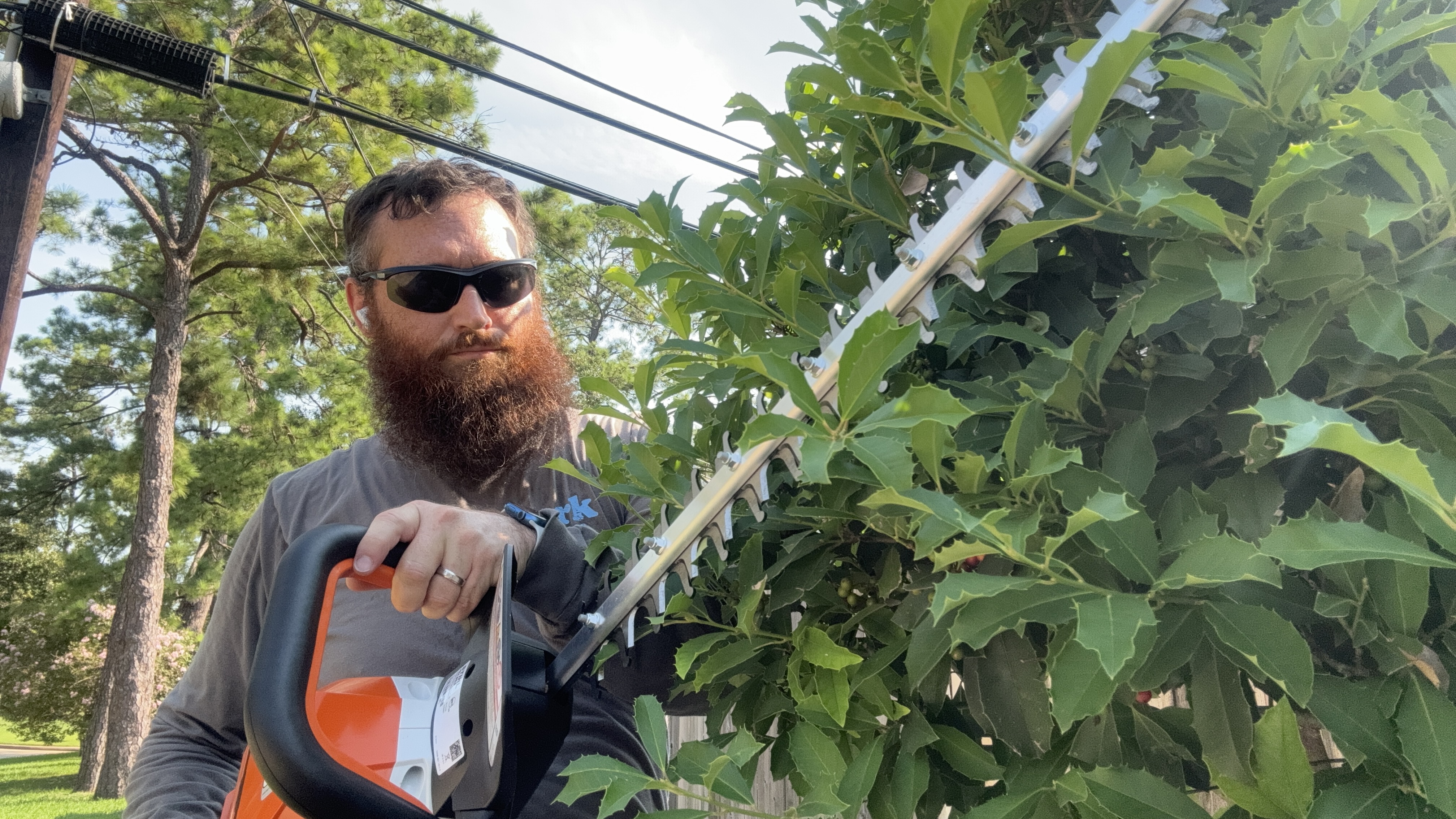
Once you’ve finished trimming, you can step back and admire your work—but don’t put away your hedge trimmer just yet.
Assuming you’re not Edward Scissorhands, it’s unlikely that you’ll have trimmed your hedge perfectly at the first attempt. So, look at the hedge from multiple angles, identify any uneven areas, then turn your trimmer back on and neaten up. It’s easiest to do this now, while your hedge trimmer is set up and ready to go.
5. Tidy up the trimmings

Hedge trimmings contain woody stems or twigs which will decompose slowly—unlike fast-disintegrating fallen leaves, which some gardeners leave on the ground to act as a mulch.
So, you’ll need to tidy up your hedge trimmings and remove them from the area. If you have put down a tarp to catch the trimmings, you can simply fold up the material and carry it carefully to your garden waste bin. If not, you’ll need to use tools such as a rake or leaf blower to pick up the pieces. Or, if you have plenty of time and a really good pair of gardening gloves, you could collect the trimmings by hand.
6. Clean your hedge trimmer
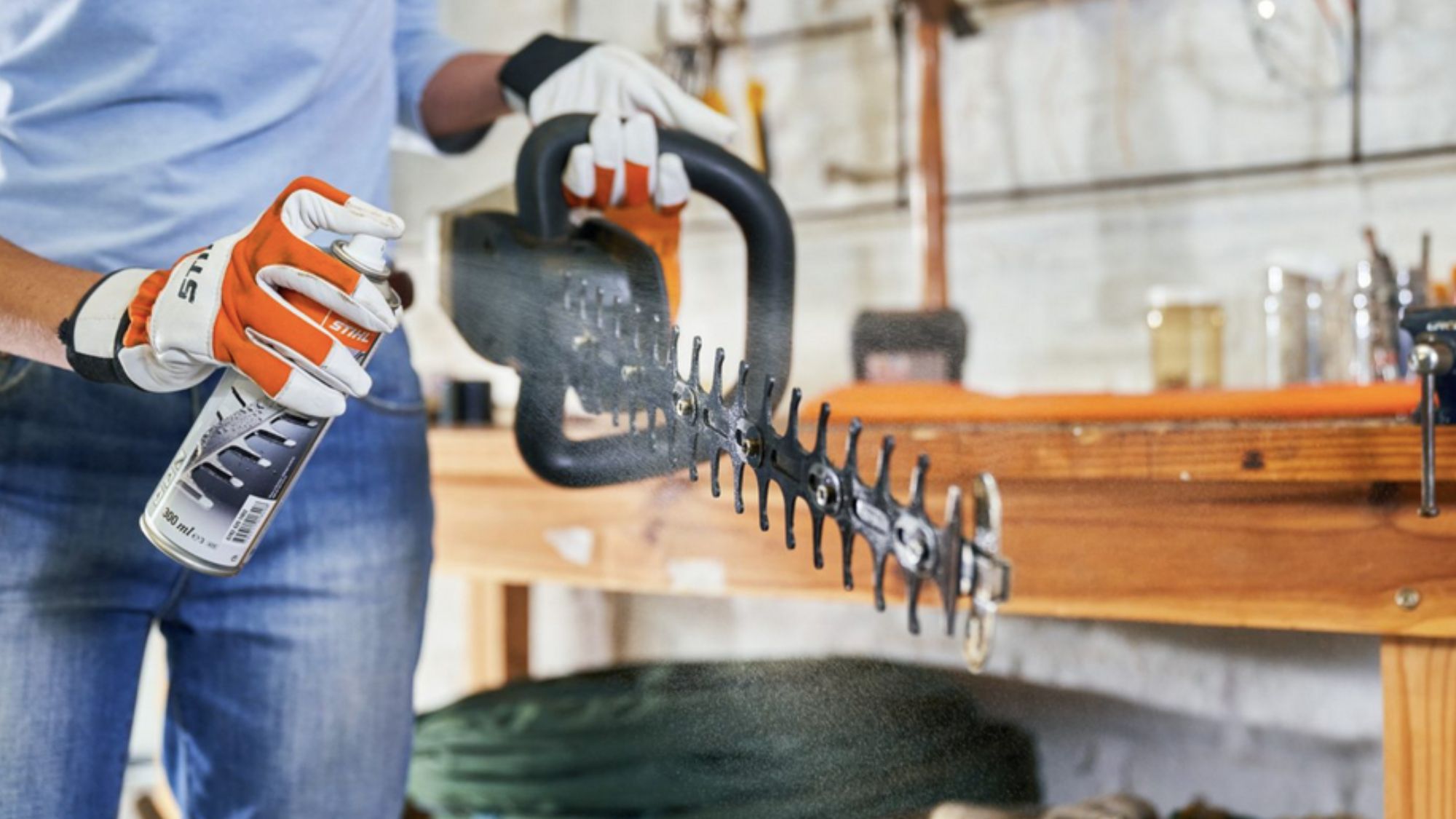
Routinely maintaining and cleaning your hedge trimmer will keep the tool working effectively for longer—so there’ll be less chance of a breakdown the next time you use it.
To clean the trimmer, first disconnect the power source. Then, use a stiff-bristled brush to remove any detritus from the blade and areas such as vents on the body of the trimmer.
While cleaning is essential, there are other hedge trimmer maintenance tasks that should be done frequently—if not every time you use the tool.
“The most important best practices I’ve picked up include always keeping the blades sharp for a cleaner cut and less strain on the trimmer,” says Morris.
“Regular maintenance, such as cleaning and oiling the blades, keeps the tool in good condition and extends its life.”
When you’re happy with the condition of your hedge trimmer, store it in a safe, dry place.
How to use a hedge trimmer: FAQs
When should you trim your hedge?
“There isn’t a best time of year to trim your hedge, as the ideal timing depends on whether you’re maintaining it or cutting it back,” says James.
“However, trimming hedges during dormancy—which usually means December, January or February—is a good option to avoid peak growing season and nesting birds. An early trim in December will sometimes mean you can cut the hedge back before the first frost.”
Meanwhile, if your aim is simply to keep your hedge in a good shape, you can achieve this with a light trim at most times of year. Try to avoid trimming during a heatwave or drought, as the hedge may be stressed and less capable of regrowth under these conditions.
Which type of hedge trimmer is the most effective?
It can be tricky to choose the best hedge trimmer for your hedge, given the wide range of models available. Different types of trimmer have their own strengths and weaknesses, so you’ll need to select the option that best suits your needs.
“I’ve found that each type of trimmer has pros and cons depending on the job,” says Morris.
“For light, regular trimming, I’ve been particularly impressed by some of the newer battery-operated models. They offer great mobility, are less noisy than petrol models, and have the added benefit of being environmentally friendly.
“For larger jobs or more robust hedges, petrol trimmers tend to be more powerful and efficient, though they require more maintenance. Brands like STIHL and Husqvarna consistently perform well across both petrol and battery-powered options, with features like rotating handles, which make trimming at different angles much easier,” he says.
Final thoughts
The hedge trimming techniques discussed in ‘Step 3’ will help you trim your hedge to a superb standard—but the preparation, tidying and maintenance tasks that come before and after are equally important to keeping your hedge, your hedge trimmer and yourself in perfect condition. Don’t take shortcuts; work thoroughly for safe, effective hedge trimming.







